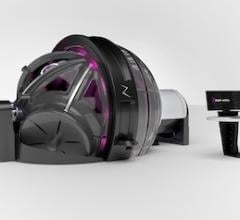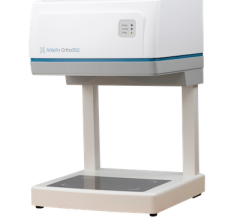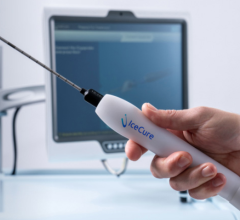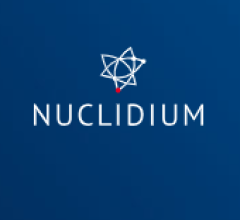
May 5, 2025 — GE HealthCare recently announced that the U.S. Food and Drug Administration (FDA) granted 510(k) clearance of its Aurora nuclear medicine system and Clarify DL.ii This advanced dual-head SPECT/CT is designed to enhance diagnostic capabilitiesi and streamline workflows, offering clinicians excellent image quality and operational efficiency.
“We are thrilled to be the first in the United States to adopt this incredibly impressive technology,” shares Donna Plecha, MD, Chair Department of Radiology, Radiologist-in-Chief, and Ida and Irwin Haber and Wei-Shen Chin, MD Chair in Radiology, at University Hospitals. “Aurora’s seamless integration of SPECT and CT components will allow us to perform comprehensive, high-quality diagnostic exams in a single session, while its support of Clarify DL deep-learning image reconstruction enables enhanced image quality performance.”iii
As healthcare continues to shift toward precision medicine and personalized care, clinicians require more advanced SPECT/CT solutions that provide greater diagnostic accuracy and efficiency. The ability to monitor and help tailor treatments to individual patients depends on high-quality imaging that can detect subtle disease markers with confidence. To meet these evolving needs, new technologies – like Aurora and Clarify DL – must seamlessly integrate into various clinical settings, ensuring that hospitals and imaging centers can adopt them without disrupting existing workflows.
“Aurora and Clarify DL are powerful reflections of GE HealthCare’s ongoing investment in next-generation imaging solutions that empower clinicians to practice precision medicine and make more informed decisions,” says Jean-Luc Procaccini, President and CEO, Molecular Imaging and Computed Tomography, GE HealthCare. “By providing diagnostic precision while enabling improved workflow, these nuclear medicine technologies allow clinicians to deliver effective, patient-centered care—ultimately helping drive better outcomes. We are proud to be a leader in nuclear medicine and AI technologies and excited to make Aurora with Clarify DL available to healthcare systems – like University Hospitals – and clinicians throughout the United States.”
Aurora provides imaging precision, streamlines workflows, and enables an improved patient experience – marking a significant step forward in nuclear medicine. Its 40 mm detector – twice the detector coverage compared to CTs of other hybrid systemsiv – and 128-slicev plus intelligent imaging capabilities help support a wide range of clinical applications, from cardiology to oncology and neurology. Furthermore, Aurora’s available 5/8-inch crystal NaI detectors make it a suitable system for a wide range of clinical radiopharmaceuticals, including those used in the rapidly evolving field of theranostics.
Designed to build on this performance, Clarify DL offers excellence image quality performance without having to increase injected dose or scan time.iii Leveraging advanced deep learning technology – a type of artificial intelligence – Clarify DL works to enhance bone SPECT image quality performanceiii with clear, accurate, and effortless imaging – an essential factor in increasing diagnostic confidence. In a clinical evaluation, Clarify DL’s image resolution was rated as better in 98% of the exams, demonstrating its potential to transform nuclear medicine bone SPECT imaging diagnostics.vi Unlike traditional noise reduction techniques that may compromise contrast and resolution, Clarify DL is designed to optimize reconstruction without sacrificing image quality.
Additionally, Aurora is equipped with a collection of Effortless Workflow solutions to help ease technologists’ work from pre-scan to post-scan with various automation and design innovations as well as help enhance patient comfort – including those with high BMI.
“Patient flow and overall operational efficiency are crucial for us, making Aurora the ideal choice to help meet our needs,” adds Percival Kane, Chief Operating Officer, University Hospitals Ahuja Medical Center. “Additionally, we're excited that Aurora's Revolution Ascend CT technology matches what is used in our radiology department daily.”
University Hospital’s purchases of GE HealthCare’s Aurora SPECT/CT with Clarify DL, Effortless Workflow, and MIM Software solutions is a reflection of the two institutions’ strategic collaboration to provide contemporary equipment and digital solutions to improve processes for the benefit of patients and clinicians alike. A focus of the collaboration is to implement enterprise-wide technology to optimize workflows and help improve clinical decision-making.
For more information on GE HealthCare’s recently FDA-cleared Aurora SPECT/CT system and Clarify DL AI-powered solution, visit gehealthcare.com.
[i] Compared to NM/CT 870 DR.
[ii] Clarify DL is available on Xeleris V.
[iii] Clarify DL improves image quality performance measured by Structures Similarity (SSIM), Mean Squared Error (MSE), and Peak Signal-to-Noise Ratio (PSNR), as compared to GEHC bone SPECT factory reconstruction presets. Demonstrated using digital phantom simulations with inserted lesions size, location, and contrast, for AC and NC. Because phantom results may not always match those of clinical imaging, the actual IQ improvement will depend on the clinical task, patient size, and clinical practice (e.g. injected dose, scan time).
[iv] As compared to NM/CT 870 DR with Optima 540 CT.
[v] Using overlapped reconstruction.
[vi] As demonstrated in clinical evaluation in which 127 exams were rated by total of 9 physicians. Each exam was reconstructed with both Clarify DL and the existing factory reconstruction preset and evaluated by 3 of the physicians.

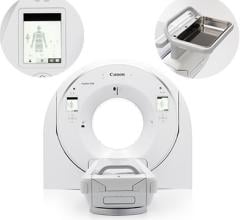
 December 04, 2025
December 04, 2025 


